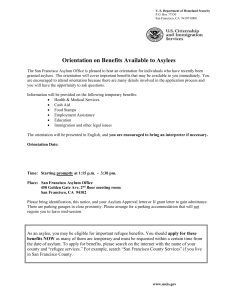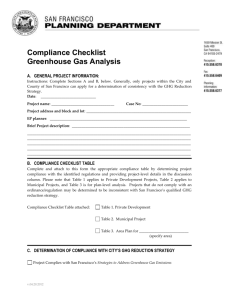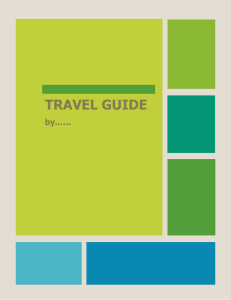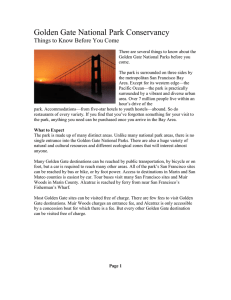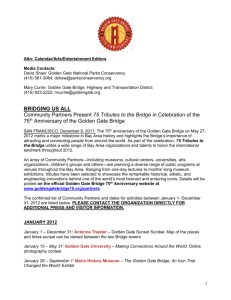There are 50 diverse states in our amazing country, and each one
advertisement
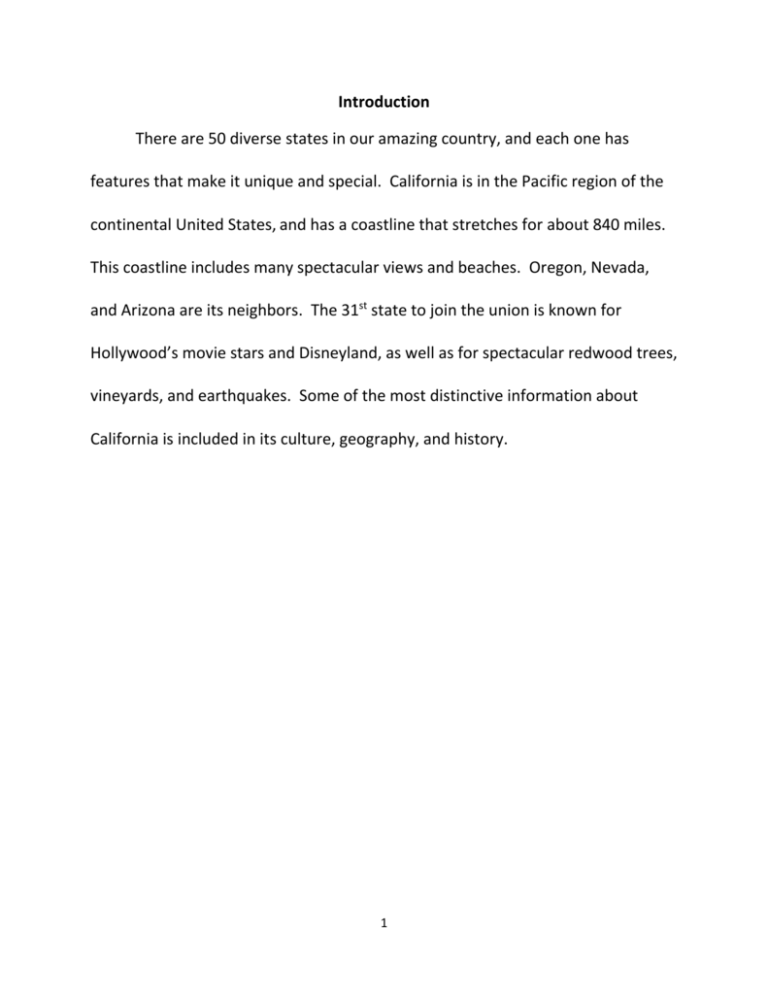
Introduction There are 50 diverse states in our amazing country, and each one has features that make it unique and special. California is in the Pacific region of the continental United States, and has a coastline that stretches for about 840 miles. This coastline includes many spectacular views and beaches. Oregon, Nevada, and Arizona are its neighbors. The 31st state to join the union is known for Hollywood’s movie stars and Disneyland, as well as for spectacular redwood trees, vineyards, and earthquakes. Some of the most distinctive information about California is included in its culture, geography, and history. 1 State Profile The culture of California is a lot like the culture of the United States as a whole, but has features that make it unique. Due to the diverse population here, a person can find many different types of foods, languages and traditions from all over the world. California is such a large state that it has several distinctive subcultures in its various regions. Just as the weather changes as you move north from the southern tip of California to the northern most regions, so does the culture of the state. California is home to more than 10 million immigrants. There are roots in the culture of Spain and Mexico, as well as similarities to the eastern United States. California culture has also been greatly influenced by several large immigrant populations from Latin America and East Asia. California is a true melting pot, as well as an international crossroad or gateway to the United States. California has been a subject of interest to many people for a long time, and has often been known as a kind of paradise. The California Gold Rush of the 1850s is still seen as a symbol of California's modern economic style, a pioneering spirit that tends to generate technology, social ventures, entertainment, and economic fads and booms that, in many cases, are followed all around the globe. In the early 20th Century, many Americans saw the Golden State as an ideal vacation destination, sunny and dry all year round with easy access to the ocean, deserts and mountains. In the 1960s, popular music groups such as The Beach Boys promoted the image of Californians as laid-back, tanned beach-goers. 2 California is home to many prestigious universities including Stanford University, the California Institute of Technology, and the University of Southern California. The state also possesses a state university system, the University of California, which is considered to be one of the top systems in the country. There are many campuses of the state university, among the best known are UCLA, UC San Diego, and UC Berkeley. California is a diverse state; it’s people come from different cultures, the state is known for many different lifestyles and businesses, and there are many factors that contributed to making California the great state it is today. 3 Geography Covering an area of 163,696 square miles, California is geographically diverse. The majestic Sierra Nevada Mountains, the fertile farmlands of the Central Valley, and the dry Mojave Desert of the south are just some of the major geographic features of this amazing state. Some of the world's most exceptional trees can be found within the borders of California, including the tallest, the coast redwood; the most massive, the giant sequoia; and the oldest, the bristlecone pine. California claims both the highest point, Mt. Whitney, and lowest point, Death Valley in the continental United States The state is generally divided into northern and southern California because the state covers such a large area with different characteristics and climates. San Francisco defines the northern California city while Los Angeles is a good example of a southern California city. The most populated parts of northern California include the San Francisco Bay Area, made up of San Francisco, Oakland, San Jose, and Sacramento, the state capital. 4 The major mountain range in the state of California is the Sierra Nevada. The foothills area of this range makes up a lot of California's Gold Rush trail. Other mountain ranges include those at Lake Tahoe and Mammoth Mountain where skiing is popular, San Bernardino mountains in Los Angeles, Cascade mountains of Northern California, and many more. The long ocean coast affects California’s weather greatly. It keeps things cool in summer and warm in winter. Southern California enjoys hot summers and mild winters, while northern California is colder in the winter and not as hot in summer. San Diego is thought by many to have the best weather conditions in the United States. California's climate is often compared to that of the Mediterranean, due to warm, dry summers, and mild, wet winters. On the coast, average yearly temperatures range between the low 40s°F and in the high 70s°F and 80s°F. Farther inland, summers are hot and dry, and at higher altitudes the weather is more like places with four seasons. The contrast is clear in the state’s two largest cities, where you’ll find very different weather patterns. San Francisco is famous for its fog — especially in the summer, and Los Angeles is known for its consistently sunny, desert-like, coastal climate. Southern California experiences rain mostly in winter and the amounts can vary. Farther north there is more rain, and snow provides skiers with many opportunities in winter. 5 The diversity of this state’s geography makes it ideal for a wide variety of sports and tourist activities. California is one of the most beautiful states, with spectacular ocean views, outstanding mountain ranges, and amazing weather, which make it an ideal vacation spot. 6 History Many important events shaped California’s history. From its early history as a Spanish territory, to its becoming the most populated state in the country, and right up to today, California has had many important events take place within its boundaries that make it one of the most interesting states in the country. In 1602 Sebastián Vizcaíno named many landmarks along the coast, and advised Spain to colonize California. By 1697 Spaniards began establishing missions and other settlements in the southern part of the state. Spanish missions made up a series of religious and military stations established by Spanish Catholics of the Franciscan Order between 1769 and 1823 to spread Christianity among the local Native Americans. In 1848 James Marshall discovered gold at Sutter's saw mill in Coloma, thus kicking off the famous Gold Rush of 1849 February 2, 1848 saw a formal end to the U.S.-Mexican War with the signing of the Treaty of Guadalupe Hidalgo. Under the treaty the United States acquired all of Alta California, New Mexico and Texas. This event led to more westward expansion with the California Gold Rush, beginning in 1849. The "49ers" were people who traveled to California to get rich mining for gold. 7 California joined the Union as a free state on September 9, 1850, due to the compromise of 1850. By the end of the 19th century, California was still mostly rural and agricultural, but had a population of about 1.4 million people. The trans-continental railroad system was established in the late 1800s with funding from a group of men whose economic influence helped shape California's industry. The system included tracks throughout California's Sierra Nevada region, as well as connecting New Mexico, Colorado, Arizona, Mexico, Utah, and Nevada for mining and travel opportunities. In 1906 an earthquake and fire destroyed much of San Francisco. Construction of the Golden Gate Bridge began on January 5, 1933; it finally opened to traffic on May 28, 1937. The Golden Gate Bridge is a suspension bridge spanning the Golden Gate, the opening of the San Francisco Bay into the Pacific Ocean. The bridge links the city of San Francisco, on the northern tip of the San Francisco Peninsula, to Marin County. It is one of the most internationally recognized symbols of San Francisco, California, and of the United States. It has been declared one of the modern Wonders of the World by the American Society of Civil Engineers. Many people consider the Golden Gate Bridge the most beautiful and most photographed bridge in the world. Lack of rainfall in southern California caused problems in an area that could have been used for agriculture. That changed in 1960 when the legislature provided money 8 for a project to distribute excess water from the northern mountains to coastal cities and southern California. By 1963 California had the largest population of all U.S. states. The Northridge earthquake happened on January 17, 1994, and lasted for less than a minute. The earthquake had a magnitude of 6.7; strong ground motion was felt as far away as Las Vegas, Nevada, over 270 miles from the epicenter. 57 people died, and there were over 8,700 injured. In addition, the earthquake caused about $20 billion in damage, making it one of the most expensive natural disasters in U.S. history. California’s nickname is the Golden State. Between its enormous growth following the discovery of gold in 1848, the fields of golden poppies that appear each spring throughout the state, the Golden Gate Bridge, and the clear, golden coastal sunsets over the Pacific - California truly is the golden state. Gold is also one of California's official state colors. California's state motto – Eureka... I have found it! – refers to the discovery of gold in California. This motto appears on the state seal. So many varied and interesting events happened in California’s history to bring it to the point of being the wonderful state it is today. People come from all over the world to visit or settle in this most amazing state. 9 Conclusion There is a great deal of information available about California’s history, geography, and culture that explain why it is such a remarkable state. Richard Nixon was the only president born in California. He spent a lot of his adult life here and represented a California district in Congress. Two other United States presidents lived in California; Herbert Hoover and Ronald Reagan were born somewhere else and then moved to California as adults. Reagan was the governor of California before he became president. Hoover graduated from Stanford University and returned years later. Writing this report was both challenging and fun. Overall, this project was a positive experience, and I learned a lot about how to do research on a topic and then take the information from an outline and put it into a report. There were many interesting facts that I learned about that gave me a better understanding for this great state that I live in. I hope that I get to visit many of the places that I researched. 10 11



